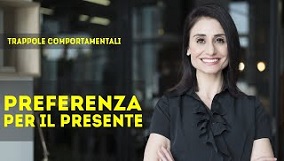Behavioural traps - Framing
Categoria:
Video
'Don't judge a book by its cover', or rather, it is the substance that counts, not the form. But how true is this? The reality is that we know that form is important, and behavioural finance has studied how form affects our choices. This is known as the 'framing effect', which means that the way figures or information are presented or 'framed' changes our perception and, as a result, alters the decisions we make. Watch our video to find out more.











 Youtube
Youtube
 X - Banca d’Italia
X - Banca d’Italia
 Linkedin
Linkedin
 RSS
RSS